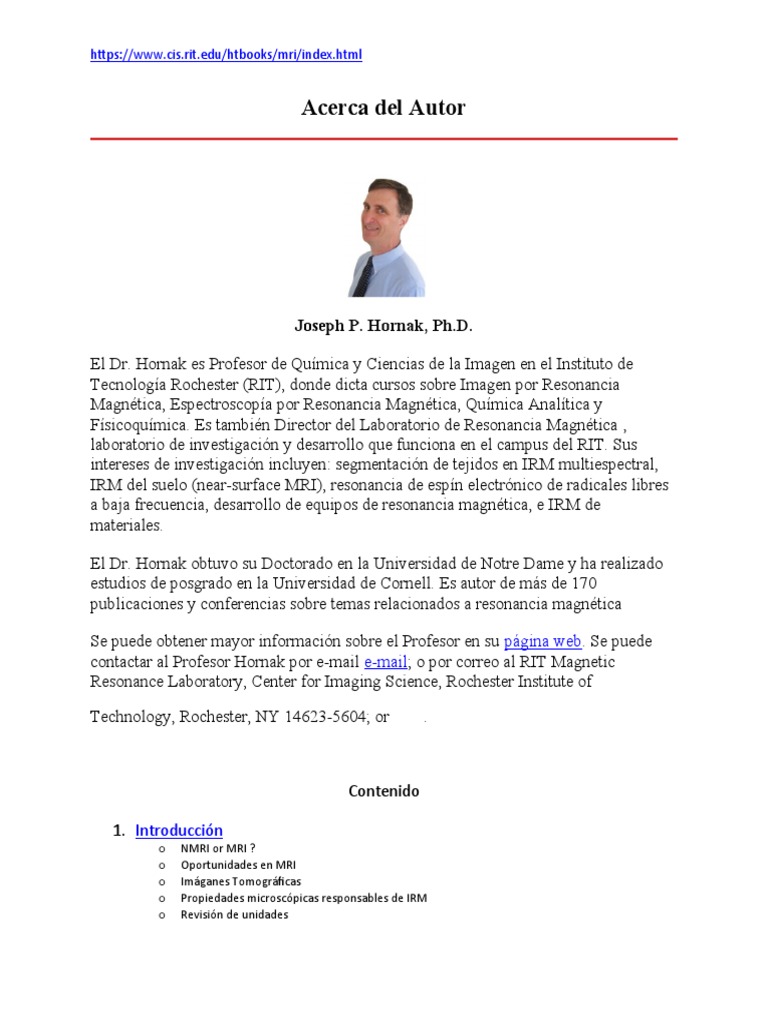Magnetic Resonance Imaging (MRI) has revolutionized the field of medical diagnostics. Yet, how well do we truly understand the intricate mechanisms that underpin this technology? As a tool that offers unparalleled insights into human anatomy, MRI utilizes complex physics principles and sophisticated equipment. This exploration delves into the essence of MRI, its underlying working principle, and the integral parts that contribute to its functionality.
Understanding MRI: An Overview
At its core, MRI is a non-invasive imaging technique that employs strong magnetic fields and radio waves to generate detailed images of internal structures within the body. Unlike conventional imaging methods such as X-rays and CT scans, MRI does not rely on ionizing radiation. Instead, it capitalizes on the intrinsic properties of hydrogen atoms, which are abundant in water and fat, to produce high-contrast images of soft tissues. This makes MRI particularly valuable in visualizing the brain, spinal cord, muscles, and joints.
How Does MRI Work? The Working Principle
The working principle of MRI is predicated on the alignment and manipulation of nuclear spins. In a patient’s body, hydrogen nuclei (protons) predominantly govern the imaging process due to their substantial abundance. When a patient is positioned within the MRI scanner, a strong, uniform magnetic field is applied, which causes the protons to align with the field.
Once in alignment, a radiofrequency (RF) pulse is emitted, perturbing the equilibrium state of the protons. As the RF pulse ceases, protons begin to return to their original alignment, a process termed “relaxation.” During this relaxation, the protons emit energy in the form of RF signals, which are then detected by coils within the MRI scanner. Utilizing Fourier transformation, these signals are converted into visual images, presenting the intricate structures of the tissues under examination.
The Parts of an MRI Machine
The MRI machine is a conglomerate of sophisticated parts, each playing a pivotal role in the imaging process. Let’s meticulously dissect these components:
- Magnet: The magnet is arguably the most critical element of the MRI unit. It generates a stable and homogeneous magnetic field, typically ranging from 1.5 to 3.0 Tesla for clinical applications. Such strong magnetic fields are vital for aligning protons and enhancing image resolution. Notably, research is underway to develop higher-field MRI systems to improve imaging capabilities further.
- Radiofrequency Coils: These coils are responsible for transmitting the RF pulse to the patient and receiving the signals emitted during relaxation. Various coils exist, each tailored for specific body parts, such as head coils, knee coils, and breast coils, ensuring optimal image quality across different anatomical regions.
- Gradient Coils: Positioned within the magnet, gradient coils alter the magnetic field strength linearly across different spatial locations. They enable spatial encoding of the MR signal, which is essential for distinguishing between various tissues and constructing detailed images. Gradient coils facilitate multiple imaging sequences, crucial for diagnosing a multitude of conditions effectively.
- Computer System: The computer system serves as the brain behind the MRI machine. It processes the information captured from the RF signals, applies algorithms to reconstruct the images, and ultimately displays them for interpretation. Advanced software enhances imaging techniques and aids in functionalities like motion correction and 3D reconstruction.
- Patient Table: This platform supports the patient during the imaging procedure, allowing for precise positioning. The table can move in and out of the magnet bore, ensuring that the desired area is appropriately centered in the magnetic field. Ergonomics play a vital role here to enhance patient comfort during the often lengthy imaging sessions.
Challenges and Considerations
Conclusion
Magnetic Resonance Imaging stands as a testament to the marriage of physics and medicine. Through its sophisticated use of magnetic fields, radio waves, and advanced computing, MRI has transformed the landscape of diagnostic imaging. A nuanced understanding of its working principles and components allows us to appreciate the depth of technological prowess integrated within each machine. As research continues to advance the field, one can only ponder: what further innovations lie ahead in MRI technology? The answers to this question will likely reshape our approach to diagnostics and therapeutic strategies in the years to come.












